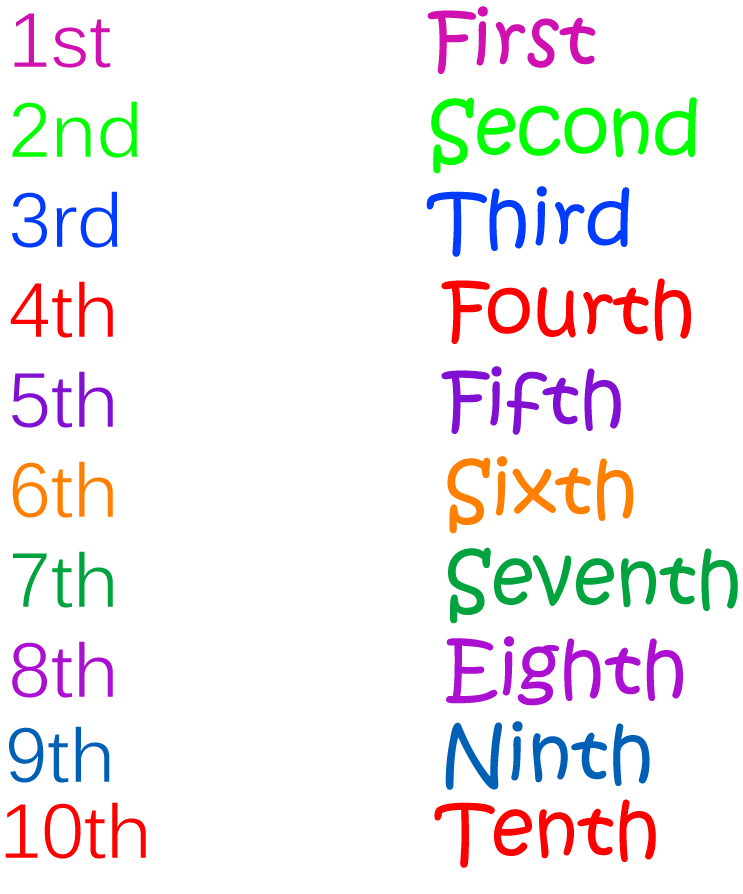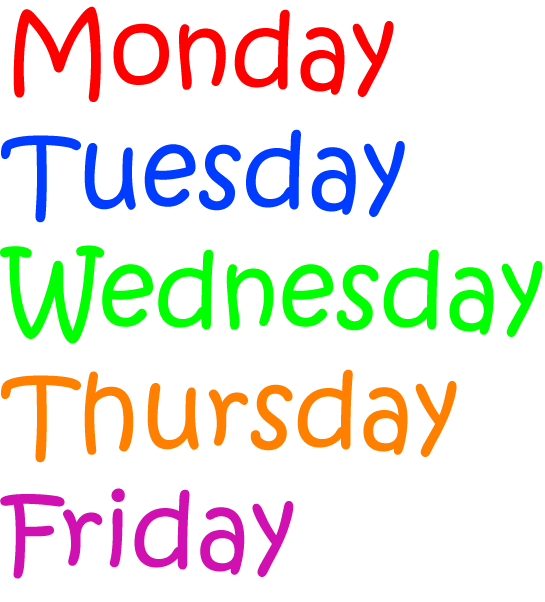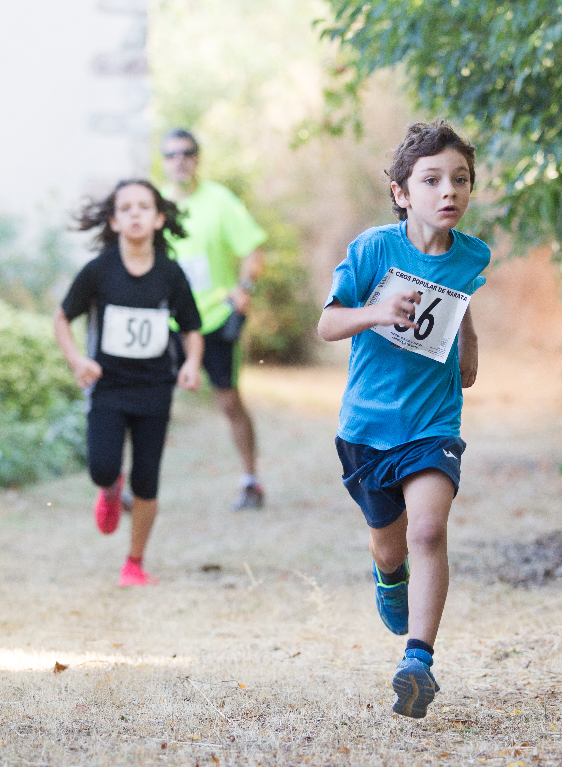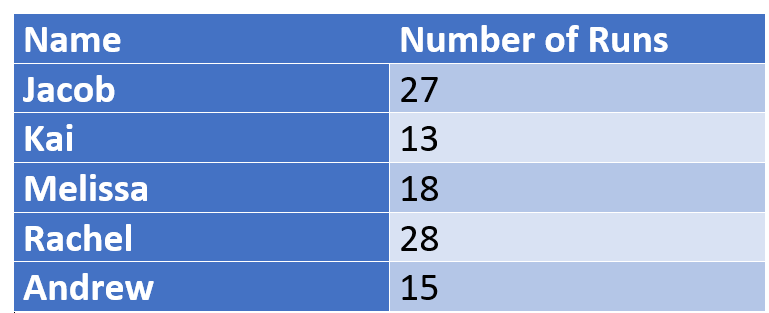Prekinder to Grade 2 Mathematics
Ordinal Numbers
Ordinal Numbers
Introduction
Ordinal numbers are the numbers we use to tell us the position of something in a list. They can be used to describe a finishing position in a race, a competition, the order in which tasks are completed, dates, or the days of the week. Ordinal numbers tell us about the order of something. It's important to understand ordinal numbers because we use them all the time.
You can see the first 10 ordinal numbers in the list on the right. There are two ways of writing each ordinal number. You can either use a short version, like "7th" or the full word, like "Seventh".

Uses of ordinal numbers
Let's look at a few everyday uses of ordinal numbers.
Dates
Ordinal numbers are used in dates. Dates like Wednesday, the 15th of November tell us that we're talking about the Wednesday that falls on the fifteenth day of the month, November. Other dates might be the 1st of January, the 28th of February or the 16th of March. Each date tells us which particular day of the month is being referred to.

School Days
The school week has five days in it. When we list them in order, the days of the school week are Monday, Tuesday, Wednesday, Thursday and Friday. The first day of the school week is Monday, the second day of the school week is Tuesday, the third day of the school week is Wednesday, the fourth day of the school week is Thursday and the fifth day of the school week is Friday.

Timetables
The picture shows a class timetable for part of Monday. The events that occur on Monday are placed in a list, in order of the time when they happen. The first lesson is writing, the second lesson is reading, and recess comes third. Maths groups are fourth and sport is fifth. Ordinal numbers are used to tell us the order of lessons for the day.

Races and Rankings
Ordinal numbers can be used to tell you where you come in a race. In the picture, the boy in the blue shirt is in first position, the girl in the black shirt is coming second and the man in the green shirt is coming third.


Gus the snail and his friends are having a race here to see who is the fastest glider. The fastest glider will be the snail who comes first in the race. At present, it looks like the pink and purple snail is the fastest. So the pink and purple snail is first, the green and yellow snail is second, the red and brown snail is third, and Gus is in last position (or fourth).

The manager of the school cricket team is holding a competition to see who will score the most runs for the season. The table shows the students in the top five places. Rachel is coming first with 28 runs, Jacob is coming second with 27 runs, Melissa is coming third with 18 runs, Andrew is coming fourth with 15 runs, and Kai is coming fifth with 13 runs.
Conclusion
Ordinal numbers crop up everywhere. See if you can think of some more examples where ordinal numbers are used.
Description
This mini book covers the core of Math for Foundation, Grade 1 and Grade 2 mathematics including
- Numbers
- Addition
- Subtraction
- Division
- Algebra
- Geometry
- Data
- Estimation
- Probability/Chance
- Measurement
- Time
- Money
- and much more
This material is provided free of cost for Parent looking for some tricks for their Prekinder, Kinder, Prep, Year 1 and Year 2 children
Audience
Grade 1/Year 1, Grade 2/Year 2, Prep, Foundation, Kinder and Pre-Kinder
Learning Objectives
These lessons are for kids aged 4-8 with the core objective to expose their brains to concepts of addition, subtraction, division, algebra and much more.
Author: Subject Coach
Added on: 6th Apr 2018
You must be logged in as Student to ask a Question.
None just yet!